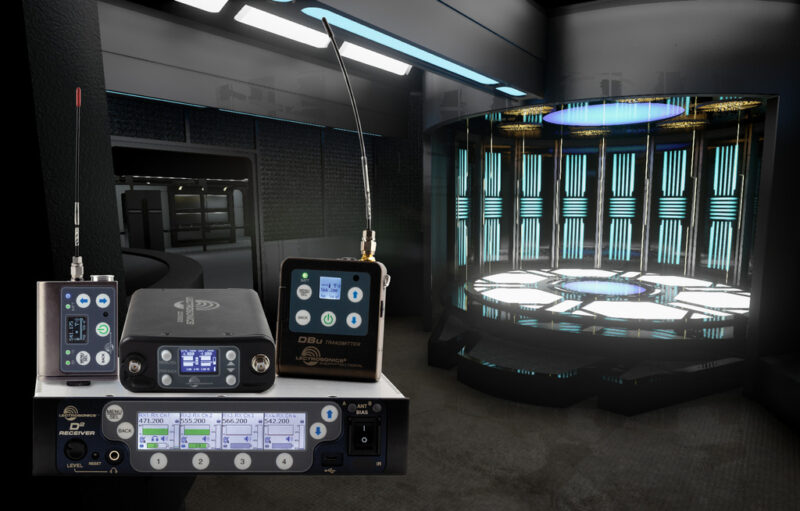
Rio Rancho, NM—April 01, 2022—Lectrosonics is announcing new firmware updates for the DBu and DBSM digital transmitters as well as the DCR822 and DSQD digital receivers, allowing them to be an integral part of an object transporter system under development by an undisclosed New Mexico partner company. Building on Effective Field Theory research conducted originally at Columbia University in 2019* around the concept that sound waves carry mass, the Lectrosonics engineering and development team realized that the company could play a pivotal role in the process. Bridging the gap between mass, sound waves, audio, and wireless transmission, the new firmware enables the Lectrosonics transmitters and receivers to act as “middleware” in the transfer of an object through space from one place to another, nearly instantly.
The process begins at the originating transporter location, where an object is bombarded with sound waves until it disintegrates, and the reflected energy is captured by an array of specialized, proprietary microphones. These signals are then processed using algorithms co-developed by Lectrosonics and the un-named company. From there, the processed signals are fed to a Lectrosonics digital transmitter via analog input. The transmitter must be running firmware v4.1.22. Once digitized in the transmitter, signal is then sent over the air in a single carrier frequency via a proprietary modulation scheme developed just for this purpose. The receiver (also required to run firmware v4.1.22) then decodes this digital stream and sends it to the destination transporter module via AES. Audio frequency response of 20 – 20 kHz, with dynamic range greater than 100 dB and linear phase response is required for the wireless system to function properly in this capacity. From there, the object is “printed” at the destination transporter in a manner reminiscent of today’s 3D printers.
Lectrosonics admits that the new transporter system is currently only compatible with plastics since, like in microwave ovens, metals don’t react well and tend to give false values during the sonic scanning and disintegration process. The company adds that with additional research and development, they will shortly be on the cusp of solving the materials problem as well. The company did not comment on whether organic materials or living things can be sent in this manner.
“Imagine being able to move small objects from one place to another, instantaneously!” exclaims Karl Winkler, VP of Sales & Marketing at Lectrosonics. “Just think – you might need a small accessory like a silicone sleeve for your plug-on transmitter or a dust cover for your microSD card slot. With this technology – think of a cross between Roswell and Los Alamos – you might be able to order these accessories and receive them in minutes. This will put overnight shipping to shame in both speed and cost!”
Availability: Now. Cost: Free download from www.lectrosonics.com
* https://phys.org/news/2019-03-evidence-mass.html


